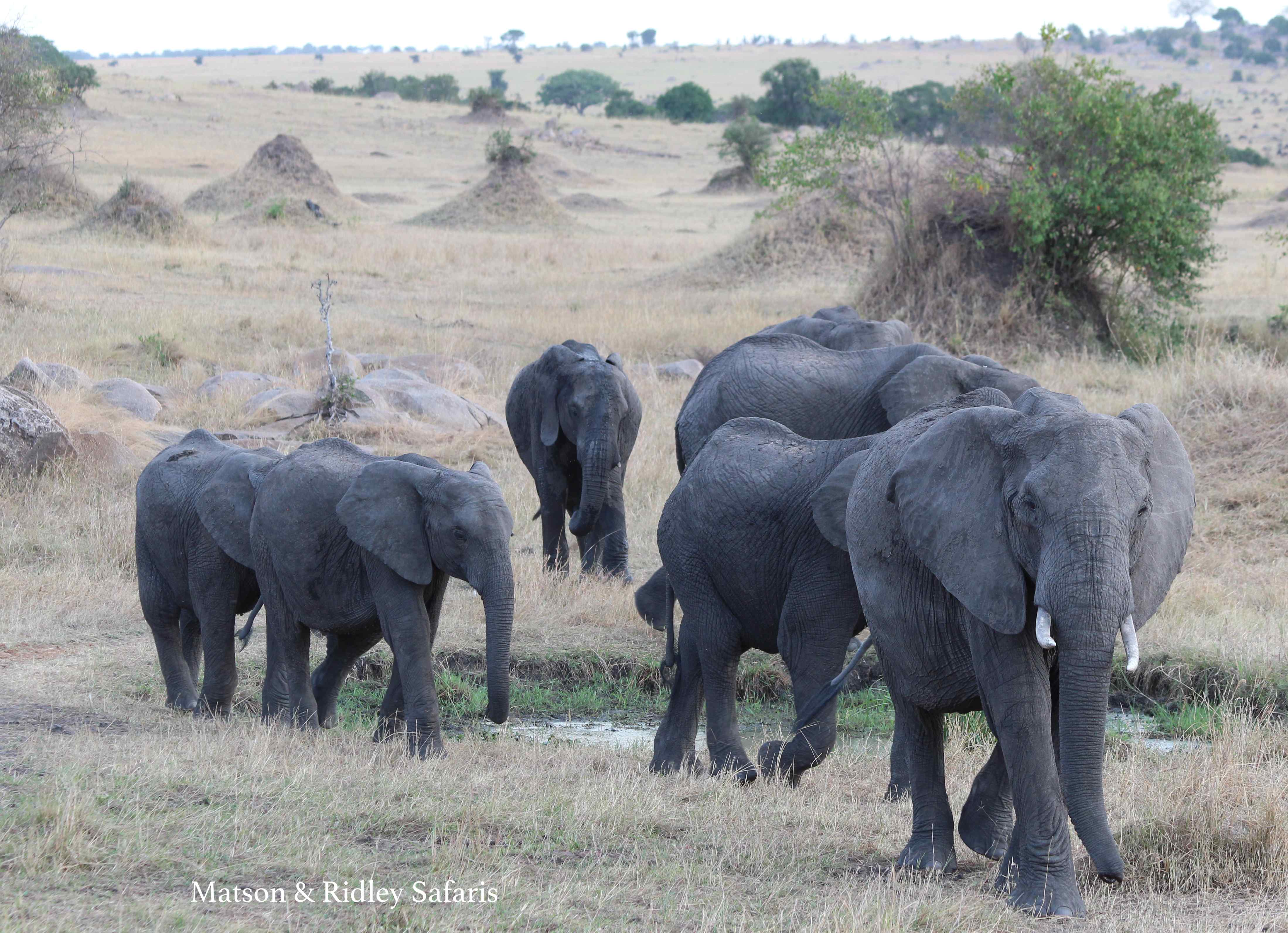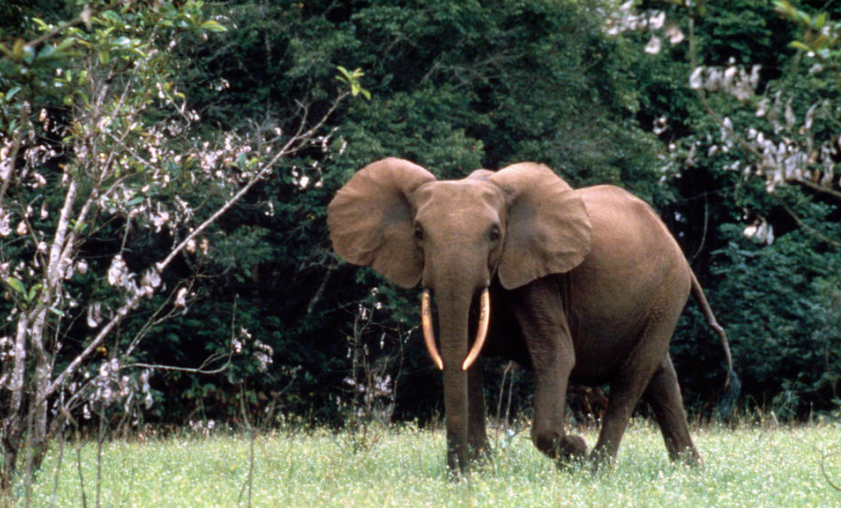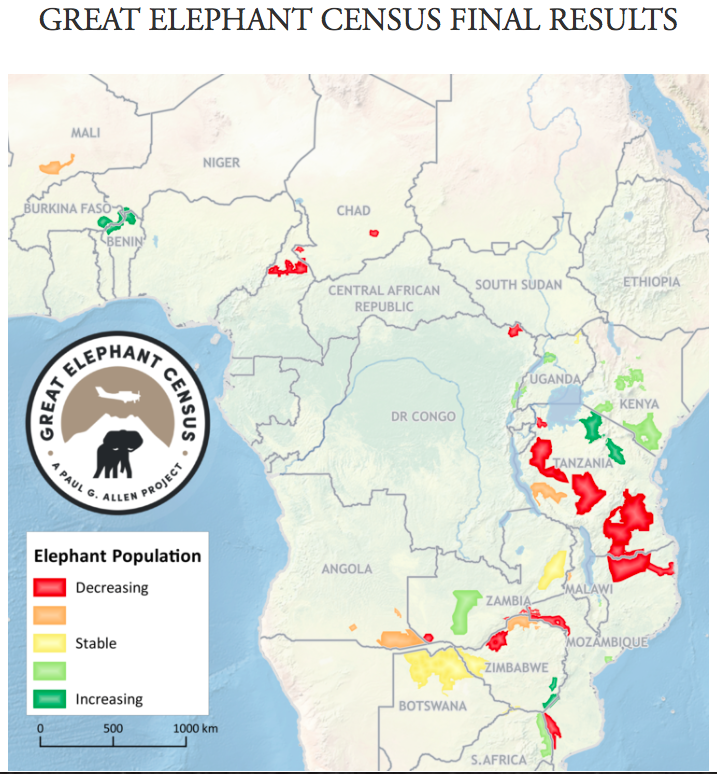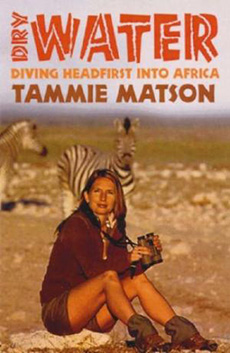Great Elephant Census Shows Massive Decline
It’s been 40 years since the last pan-African elephant census and so we conservationists have been playing a bit of a guessing game as to how Africa’s giants are really faring in terms of hard numbers. Just how bad were the declines and where are the problems greatest? That things were not looking good in the last ten years or so has been known for some time based on what information we do have from local censuses, but the great thing about the very ambitious Great Elephant Census project, led by elephant expert Dr Mike Chase and funded by Microsoft philanthropist Paul Allen, is that it’s given us a really comprehensive picture of what’s happening to African savannah elephants for the first time.
Read the full report here if you like. I’ve tried to summarise the main points below.

The elephant population of Tanzania has been hard hit by poaching, losing 60% in the last 5 years, but the population in Serengeti is doing better than parks elsewhere in the country which has declining populations.
The news is not good, even if not unexpected. African savannah elephant populations have declined by 30% between 2007 and 2014, equal to almost 145,000 elephants. A total of 352, 271 elephants were counted in the 18 countries surveyed, representing 93% of elephant range. This means that, when you factor in Namibia’s roughly 20,000 elephants that were not included, and consider the possible other 7%, there could be only around 400,000 savannah elephants left. That’s very much at the lower end of the bracket that we thought the population was. This figure doesn’t include the forest elephants of central and west Africa that are much more under threat and are still being counted. It’s much harder to get a hold on numbers in countries like the Congo and Central African Republic which have unstable political regimes. The rate of decline shown by the census is 8%, which is a very big worry and certainly unsustainable, given that the natural growth rate of elephants is about 5%.
I’m amazed that the IUCN still hasn’t listed forest elephants as a separate species to the savannah elephants of Africa, many years after the DNA studies showed this to be the case. These conservation cogs are turning far too slowly as separating the species would afford forest elephants better protection if they were officially recognised as Endangered. At the moment they are still lumped in with savannah elephants, classified as Vulnerable by the IUCN. A new study has just revealed that forest elephants breed more slowly than savannah elephants, with females starting to breed at the age of 23, compared to savannah elephant females at age 12-13. Forest elephant females have a calf an average of every 5-6 years, compared to every 3-4 years for savannah elephants. And the forest species are in some of the hardest hit poaching areas in central and western Africa. Surely it’s time to put some pressure on before these unique elephants are gone.

Forest elephants have yet to be recognised by the IUCN as a separate species, even though DNA studies show this to be the case. Photo: WWF
So what countries have been hardest hit and which ones are doing okay? The map below gives a fair idea. In red are the places were elephants are seriously declining and in green is where they are increasing.
This census has highlighted some areas that we didn’t know were under such serious threat, like the south-western corner of Zambia, where elephants have been almost obliterated right under our noses (95% according to the study), and right next to the prime tourism area of the Okavango Delta in Botswana. These elephants and those in the Congo and and northern Cameroon face imminent extinction. Absolutely shocking. The limited human activity (both tourists and researchers) in the Sioma Ngwezi National Park in south-west Zambia probably has a lot to do with the massive decline there. Central and west Africa remain major hot spots for poaching and haven’t been fully covered by the census to date (that information is still to come).
As for Tanzania, the Serengeti elephants are doing okay, but across the rest of the country elephants are in serious decline. Tanzania and Mozambique remain major hotspots for poaching, having both lost about half of their elephants to poachers in 5 years up to 2015. The census also revealed that poaching in Angola is very severe, a terrible shame as it was hoped that this country would provide a refuge for elephants coming across the border from neighbouring countries with large elephant populations as part of the KAZA Transfrontier Conservation Area.
In good news for elephants, look at the green areas where elephant populations are increasing, including Kafue National Park in Zambia, Kruger National Park in South Africa, Save Valley Conservancy and Gonarezhou NP in Zimbabwe, and parks in Uganda and Kenya. Increases were documented in populations of elephants in the conservation area spanning the west African countries of Benin, Niger and Burkina Faso as well, which is encouraging. Botswana still has the vast majority of elephants in Africa, with a stable population of about 130,000 elephants, followed by Zimbabwe with about 80,000 elephants.
So where does this leave elephants? Well the data is powerful and now it must lead to action to ensure populations that are stable or increasing continue to be built up, and those under major threat are protected as a matter of global urgency. Lend your support to organisations behind this cause like African Parks and Elephants Without Borders and also those leading the fight to stop the poaching on the ground with anti-poaching teams like the Big Life Foundation. Stopping the demand for ivory remains key to ensuring that elephants have a future. Get behind organisations like WildAid, a partner of our awareness campaign Let Elephants Be Elephants in Asia. This is going to be a joint effort so get on board!



